
Producer in Focus
Tenuta Di Valgiano, Tuscany, Italy
Imagine a microcosm teeming with life in the hills of Lucchesia...
Tenuta Di Valgiano is a gateway to a different kind of Tuscany that makes true "terroir" wine. A 16th-century wine estate steeped in history, which today is home to a breath-taking biodynamic farm that produces delicate olive oil and delicious honey that is nicknamed "Ambrosia," the Gods' nectar. Still, the main activity is "total knock-out (..) arrestingly beautiful" fine wines - as described by Antonio Galloni. But as Laura explains in an interview for 67 Pall Mall - fine wine cannot be made everywhere.
Q&A
with Laura Di Collobiano
So what is it that makes Tenuta Di Valgiano unique?
Valgiano is a magical place, covering 45 hectares in the Colline Lucchesi appellation. The estate is divided into 16 hectares of vineyards, 8 of which are olive groves, and the remainder is made up of beautiful woodland, orchards, vegetable gardens and wheat fields to make flour for pasta and bread. This way, biodiversity can be maintained. Our best terroir - where our flagship wine Tenuta Di Valgiano Rosso comes from - is situated on a south-facing plateau of 9 hectares, with soil from the pre-glacial area, which is 60 million years old, so here we have a soil of limestone and clay with an alluvial sandstone covering. A soil that can express in the grapes, the power derived from limestone and the fineness of silica sandstone soils.
The plateau is protected by the Pizzorne mountain, while the coast is 10 miles in a straight line, meaning that the quality of light hitting the leaf canopy is ideal and the 250 meters of altitude allows for easier management of the humidity.
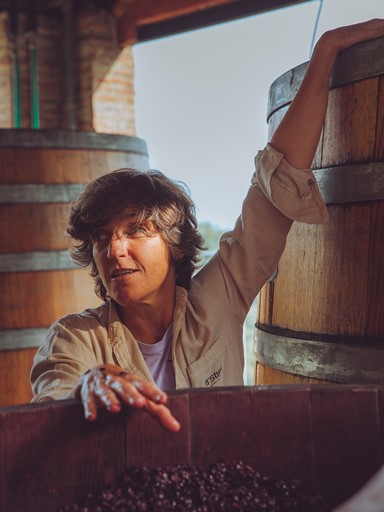
Why is biodiversity so important?
Once upon a time farms used to have a completion of elements, they would have the vineyard, the olive grove, wheat fields, animals, the forest, so this is very important for people who make wine, not to have a monoculture but a lot of things around to make everything complete and harmonious.
What can you tell us about the indigenous grape varieties and history?
The climate in this area is very variable, which is why there are many grape varieties planted to "help" Sangiovese, the predominant grape. We have kept this tradition and are still using all the grapes we found at the beginning of our story here, in 1992 - Cigliegiolo, Canaiolo, Colorino, Barbera and Tazzelenghe. The French varieties, Syrah and Merlot, had been introduced in 1804 when Elisa Baciocchi Bonaparte (Napoleon's sister) was ruling the town of Lucca. This was done to make sure that in the cold years' Merlot could be picked whereas in hot years Syrah would thrive. They also have different ripening times to the Sangiovese, making the harvest more manageable. This is a big part of the history of winemaking in Lucca.
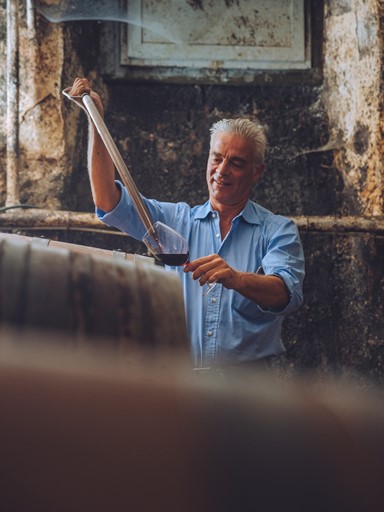
What were the most significant changes that you witnessed when you converted from conventional agriculture to Biodynamic in 2002?
The biggest change was in the soil in the vineyard - because Lucca is quite a rainy region, when it rains, the water used to run down the hill taking pebbles and earth with it. Since we have been practising biodynamics, we have noticed that the water is absorbed more effectively because the practice of biodynamics is an instrument to arrive at the fertility of the soil. Therefore, to reproduce the humus, (the humus is a bank of water) so when it rains a lot, the water gets absorbed and if ever it gets to a drought situation the water will be there, and the roots can access the nutrients from the soil deep down. This means that even in extreme years, we will always manage to achieve balance and great freshness thanks to this way of managing the land.
What has changed in the wines is a lot more subtle - all vintages have a great evolution, and they change over time, this is thanks to the terroir. We own a piece of land which is a gift, and we try to maintain in the best possible way but what is more present now is there is more light, some say that it has more precision, and definition of fruit, and a greater length and energy.
"With biodynamics, you become a creator of health, not a fighter of disease, so in general, the plants are much healthier, and even the old vines can live longer."
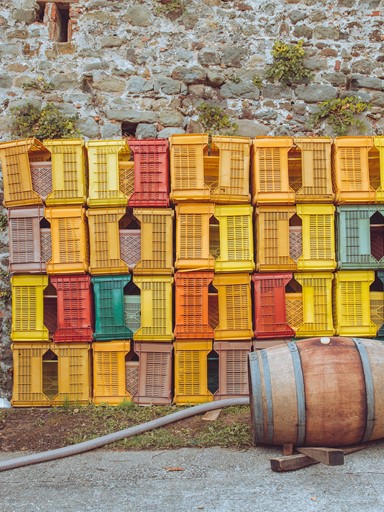
People often talk about a special energy at Valgiano, what can you tell us about this, and how does it impact the wine?
It's made lively by the comings and goings of children, dogs, bicycles, guests, residents, artists, writers, photographers, winemakers, food & wine tastings and birthday parties. There are always spontaneous get-togethers, opportunities to share, compare, and talk about wine and food. And work is done with the same naturalness, topped with a dash of vivacious creativity. The farm holding is in perpetual motion: making wine, oil, honey, collecting eggs… in a merry-go-round of grapes, barrels, olives, beehives and chickens.
"The wine is the outcome, the resulting expression of a balance made of people, of nature and of respect."
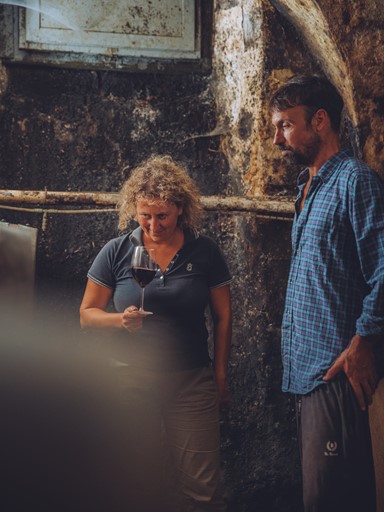
What are you most proud of?
Producing wines that express in the purest way the characteristics of this territory and a strong will to preserve its integrity to deliver it to the next generation in a better condition than it was entrusted to us.
How was the 2020 vintage?
It has been phenomenal!
What is new for 2021?
We have released a new wine "Mazzapink Rosso 2019". Named after our neighbour, the Marchese Mazzarosa, who is the proprietor of the vineyard. He had asked us to help him manage it better; so we helped him in the conversion, and it has been organic for two years now. The grapes are Sangiovese and Cabernet, a new project, for an easy-drinking wine with a fun label, very "Lucchese ". Oh, and in the vineyard, we now have two horses!
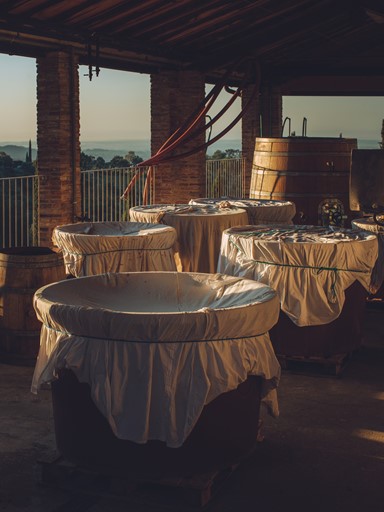
What food pairings would you recommend?
Starting from the idea that when a wine is good, (meaning: balanced, fine tannins, etc.) you can drink it any time and match it with anything you like.. a good pairing for Tenuta Di Valgiano is roasted guinea fowl with celeriac purée or a pigeon risotto.
Have you always dreamed of becoming a winemaker? When did that happen?
I always dreamt of living in the country, and it is a total privilege to manage this piece of land.
What is your best memory with wine?
The best memory with wine is always the wine I drink with friends. It could be a white, a red, bubbles (champagne-not Prosecco!) or an amazing Marsala from Bartoli or a vin Jaune...
Photo credit Tom D Morgan.
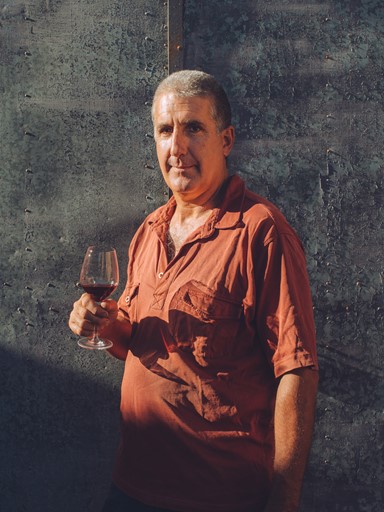
Why Not Try...
It would be impossible to pick just one of Laura’s wines so instead, we have created a Tenuta Di Valgiano Wine Box. A special selection of each cuvée to give you the best overview from this magical place.
The flagship Tenuta Di Valgiano is made from 60% Sangiovese with 40% made up from Cigliegiolo, Canaiolo, Colorino, Barbera, Tazzelenghe, Syrah and Merlot which is the same blend as the Palistorti rosso - but here the vines are older, and the soil is from the pre-glacial era, dating back some 60 million years! Tenuta Di Valgiano is the clock of time in the wine because it has huge ageing potential.
The Palistorti Rosso comes from vines that are an average of 40 years old - and soil that is 20 million years old.
The Palistorti Bianco is predominantly Trebbiano, with some Vermentino, Malvasia and Grechetto. The two hours of skin contact gives a little more character to the Trebbiano. Laura recommends pairing this wine with anchovies’ bread and butter.
The team at Valgiano like to match the following qualitative terms with the Valgiano wines: Consistency, softness, viscosity, vivacity, exuberance, texture, minerality, length, aromatic persistency and complexity.
"As a winemaker, I don't like to influence the person who is in front of me [tasting the wine] personally I'm more in pursuit of the matter of the wine. Touching the wine by focusing on the way it feels in the mouth, on the tongue, and dwelling upon the salivation produced, one has access to the complexity of the place where it originates from. As Henry Jayer often used to say, wine is not made to be evaluated, nor to make a note of. It is not made to be smelled, but to be drunk. Our ancestors created it to enhance the pleasure of staying together. It accompanies the most important rituals of living with others. Hence, the wine from Valgiano is a "vin de lieu", which belongs to a place, full of thousands of shades of ..rock!"






